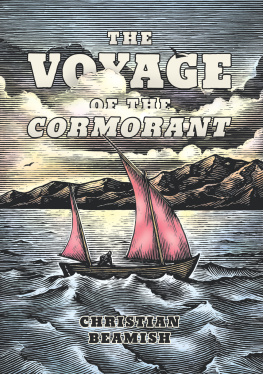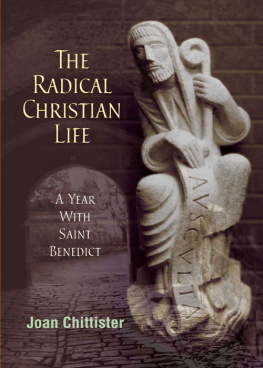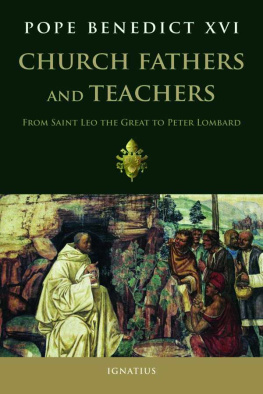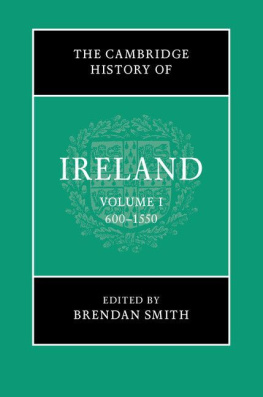BEDE was born in 673. He himself tells us that he became a monk at an early age and lived most of his life at Jarrow. Scholar, teacher and writer, he wrote biblical and other works. He has been described as the Father of English History. His historical works include Life of Cuthbert and Lives of the Abbots of Wearmouth and Jarrow, both in The Age of Bede (a Penguin Classic). Bede died in 735.
J. F. WEBB is a priest of the RC diocese of Wrexham, N. Wales.
D. H. Farmer (B.Litt. Oxon) was Reader in History at Reading University until 1988. He is author and editor of several books on ecclesiastical and monastic history such as Benedicts Disciples (2nd edition, 1999), The Age of Bede (a Penguin Classic, 1983), St Hugh of Lincoln (3rd edition, 2000) and The Oxford Dictionary of Saints (1978; 4th edition, 1997). This has been translated into Italian, Slovakian and Roumanian. A work on Anglo-Saxon missionaries in Europe is in preparation. He has also been principal consultant for the new twelve-volume edition of Butlers Lives of the Saints (19959).
The Age of Bede
Bede: Life of Cuthbert
Eddius Stephanus: Life of Wilfrid
Bede: Lives of the Abbots of Wearmouth and Jarrow
The Anonymous History of Abbot Ceolfrith
with The Voyage of St Brendan
Translated by J. F. WEBB
Edited with an introduction by D. H. FARMER
Lives of the Abbots of Wearmouth and Jarrow
and The Anonymous History of Abbot Ceolfrith
translated by D. H. FARMER
PENGUIN BOOKS
PENGUIN BOOKS
Published by the Penguin Group
Penguin Books Ltd. 80 Strand, London WC2R 0RL, England
Penguin Group (USA), Inc., 375 Hudson Street, New York, New York 10014, USA
Penguin Books Australia Ltd, 250 Camberwell Road, Camberwell, Victoria 3124, Australia
Penguin Books Canada Ltd, 10 Alcon Avenue, Toronto, Ontario, Canada M4V 3B2
Penguin Books India (P) Ltd, II Community Centre, Panchsheel Park, New Delhi 110 017, India
Penguin Books (NZ) Ltd. Cnr Rosedale and Airborne Roads, Albany, Auckland, New Zealand
Penguin Books (South Africa) (Pty) Ltd. 24 Sturdee Avenue, Rosebank 2196, South Africa
Penguin Books Ltd, Registered Offices: 80 Strand, London WC2R 0RL, England
www.penguin.com
First published 1965
Reprinted with revisions and new introduction 1983
Reprinted with revisions 1988, 1998
Reprinted 2004
11
Translation copyright J. F. Webb. 1965
Introduction and Notes copyright D. H. Farmer, 1983, 1988
Translation of Lives of the Abbots of Wearmouth and Jarrow
and of The Anonymous History of Abbot Ceolfrith
copyright D.H. Farmer, 1983, 1998
Except in the United States of America, this book is sold subject
to the condition that it shall not, by way of trade or otherwise, be lent,
re-sold, hired out, or otherwise circulated without the publishers
prior consent in any form of binding or cover other than that in
which it is published and without a similar condition Including this
condition being imposed on the subsequent purchaser
ISBN: 9781101491133
Contents
Introduction
by D. H. Farmer
THE five texts presented in this volume are important sources for the early history of the Christian Church in England and Ireland. The saints described in them lived in the sixth and seventh centuries. Each was an attractive pioneer both of monasticism and of the primacy of the spiritual. In an age and environment in which the heroic was deeply appreciated, each of them embodied a heroism comparable to, yet different from, that of mythical gods and warriors. They fought spiritual battles against invisible diabolical enemies with the weapons of prayer, fasting and solitude; yet each also contributed powerfully to building Christian cities, communities of monks. Each obtained posthumous and permanent, as well as transient, glory.
These men came from different backgrounds and had contrasting temperaments. Brendan was the earliest, an Irish monk, abbot and founder. But his Navigatio is the latest of the five documents and arguably the least rich in authentic personal detail. It is, however, both an attractive and a rewarding document, part fact and part fiction, which represents a long Irish monastic tradition of which the historical Brendan (d. 575) is one famous example. Better known personalities in the same tradition are Columbanus (d. 615), whose writings, missionary activity and monasteries (especially Bobbio and Saint-Gall) made him the most famous Irish apostle in Western Europe, and Columba of Iona (d. 597), especially important in south-west Scotland and through his disciples in Northumbria also.
Cuthbert was a Northumbrian, born in 634. He was trained as a young man by Irish monks at Melrose. After a few years as guestmaster in the abortive foundation at Ripon, followed by the famous Synod of Whitby (663/4), he became prior of Lindisfarne. He was attracted, however, to a more complete solitude, realized first on St Cuthberts Isle close by and later on the island of the Inner Farne, where he lived as a hermit until 685 when he was called to be a bishop. Lindisfarne was his see, but he lived as bishop for only two years. He died in 687 at the age of fifty-three.
Wilfrid was a Northumbrian also. Like Cuthbert, he became both monk and bishop, being trained first by Irish monks at Lindisfarne and later at Rome, the centre of Christendom. He went to Rome for the first time as a young man, staying for a while at Lyons on his way. Here he experienced the ideals and lifestyle of the Merovingian bishops. After his return to England he became the spokesman for the Roman side at the Synod of Whitby and, soon afterwards, bishop of Northumbria. He experienced extremes of favour and disgrace, was expelled from his see and appealed to Rome for reinstatement. After a second expulsion he again appealed to Rome, not against the division of the Northumbrian diocese but against his virtual deposition and loss of monasteries he had founded in Northumbria, Mercia and even Sussex, whose apostle he had become in exile. Eventually he was reinstated as bishop of Hexham, where he died in 709. Important as a church builder, as the propagator of the Rule of St Benedict and as a pioneer missionary in Frisia as well as Sussex, he was also a controversial figure in life and after death. His Life by Eddius Stephanus, now often called simply Stephen, a fervent partisan, was written in about 720. Whatever its faults, it has the merit of being the first historical biography to be written by an Anglo-Saxon.
Bedes Lives of the Abbots is a document rather different from the others. First, it concerns several abbots, not just one. Secondly it is a work of local history as well as biography. Thirdly it was written by Englands pioneer historian within the monastery ruled by the abbots it describes, probably within ten years of the death of one of its principal characters, Ceolfrith. Of the five works included in this volume it is the shortest, but also the richest in authentic detail. It provides attractive character sketches, vivid details about the daily life, the endowments and the art treasures of Englands largest monastery of the seventh century. It is now completed by the contemporary anonymous Life of Ceolfrith.











